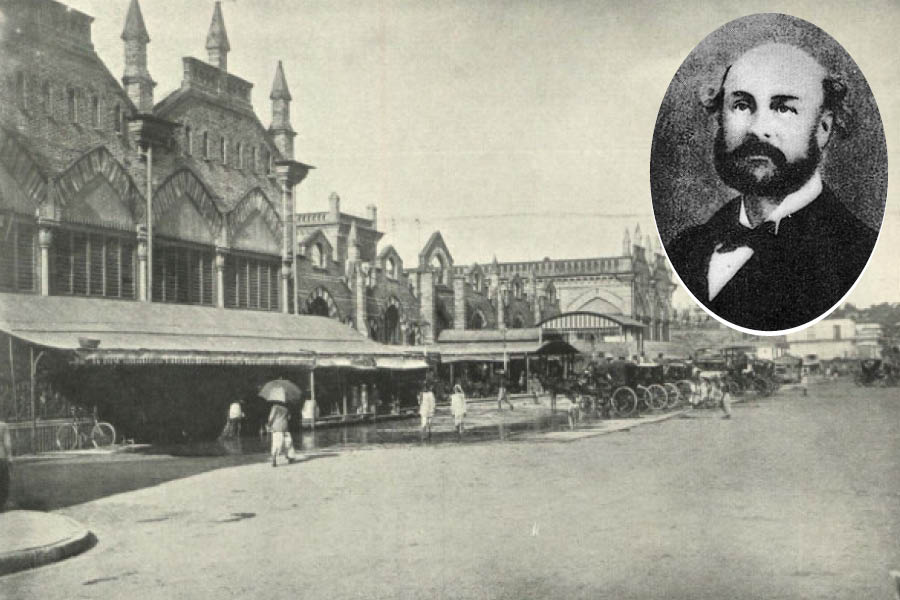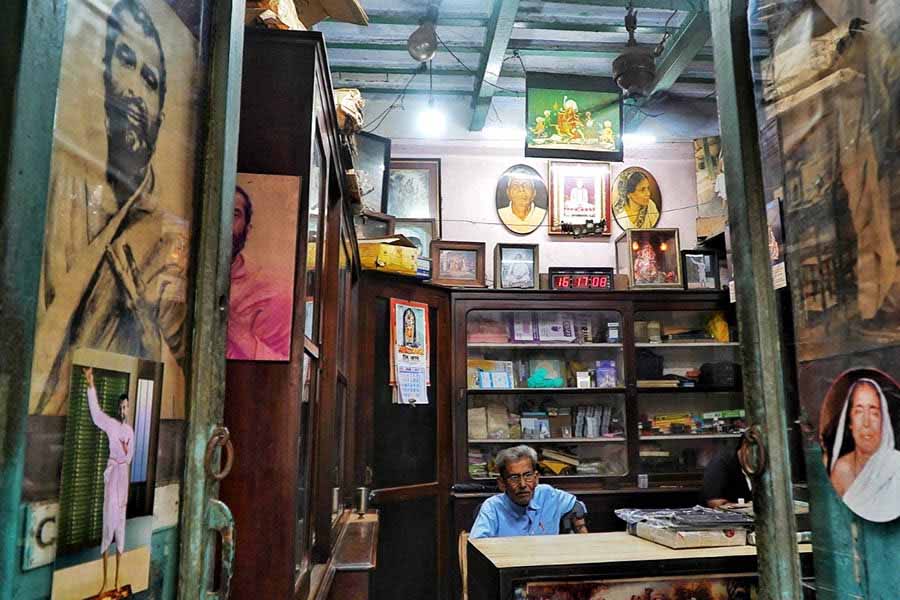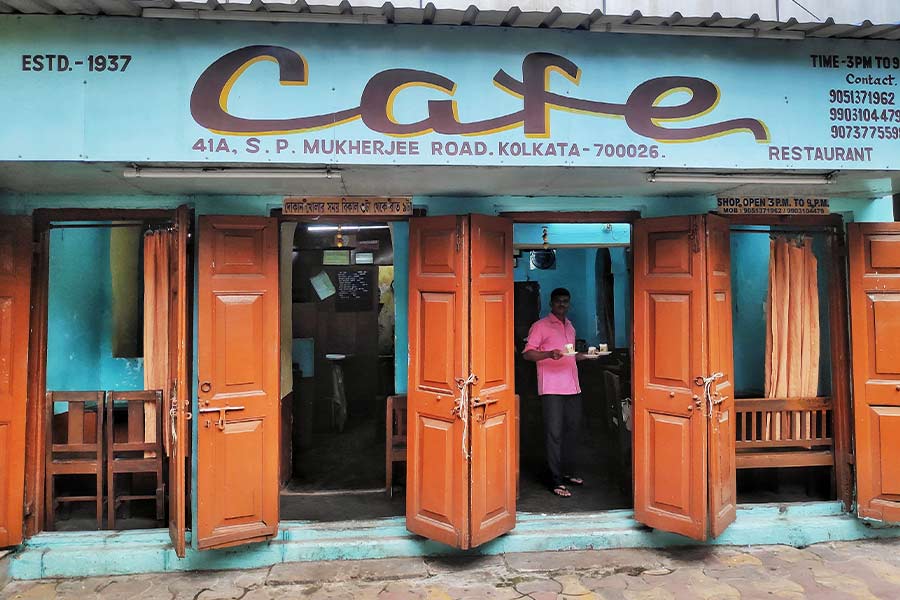Of the many commissioners, the Calcutta police has seen since its inception, no one has left as indelible a mark on the city as Sir Stuart Saunders Hogg. Ironically, his long-lasting legacy had nothing to do with the police commissioner’s chair. But more on than later.
Stuart Saunders Hogg was born on February 17, 1833, in Delhi. His father, Sir James Hogg, was the registrar of Calcutta High Court. As a young boy, Stuart was sent back to his homeland to pursue a proper education which he received at the famous Eton College. From the start, Stuart distinguished himself as a gifted student and a bright future was marked for him.
In 1853, Hogg returned to the land of his birth and joined the Indian Civil Service. In the coming years, he held a number of important posts. During the Great Mutiny of 1857, Hogg was posted in Punjab. In the mid-186os, he was the district magistrate of Burdwan when a terrible famine struck. A compassionate man, Hogg opened up his official residence and provisions for the stricken mass and saved many lives. His selfless gesture, going beyond the line of duty, was duly noted and he was transferred to Calcutta.
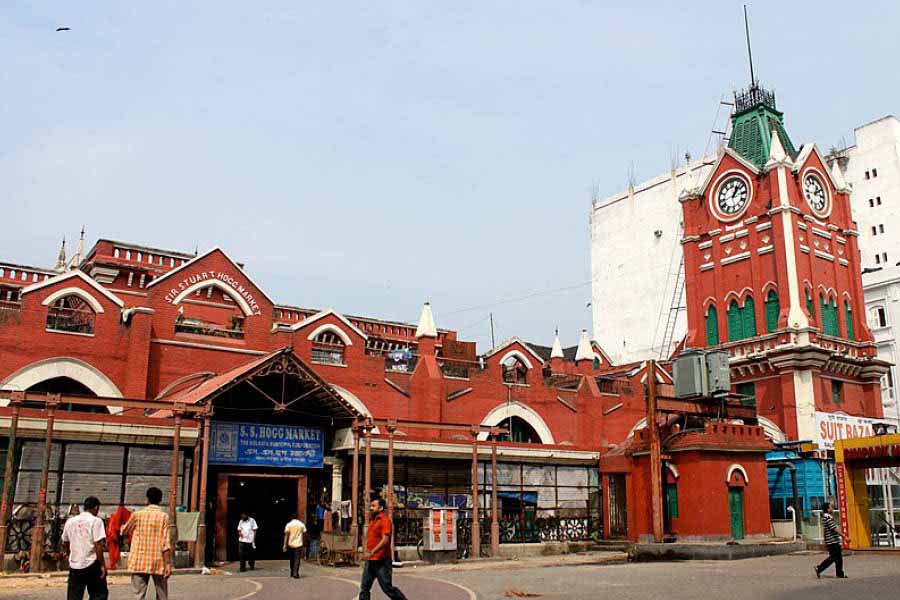
The market on Lindsay Street that defines and stands as one of Kolkata’s most recognised symbols
Here, in recognition of his abilities, Stuart Hogg was assigned twin responsibilities — that of the commissioner of police of Calcutta as well as the chairman of the fledgling Calcutta Municipal Corporation (CMC). A meticulous and dedicated worker, it is said that Hogg spent half of his day at the police headquarters in Lalbazar and the other half at the corporation offices in Jaunbazar (present day SN Banerjee Road), ensuring neither work was neglected.
It was in his capacity as municipal chairman that Hogg gifted the city one of its most memorable landmarks – one that even now defines and stands as one of Kolkata’s most recognised symbols. Although Calcutta was largely untouched by the flames of the Great Mutiny of 1857, the after-effects were strongly felt here also. Relations between the colonial rulers and the native ruled became strained. The European upper class wanted a market where they did not have mingle with natives from lower economic classes. Eventually, the CMC decided to purchase lands on Lindsay Street, demolish the old market there known as Fenwick’s Bazaar and construct a new market.
Richard Bayne, an architect from the East Indian Railway Company, was assigned to design the structure while construction was carried out by Mackintosh Burn. The new market, Calcutta’s first municipality-owned and operated one, was inaugurated on New Year’s Day of 1874. Twenty-nine years later, in 1903, Viceroy Lord Curzon, in recognition of Stuart Hogg’s silent but dynamic leadership, christened the market in his name – Sir Stuart Hogg Market (knighted in 1875).
While less remembered today, Hogg’s other long-lasting contribution to the city came from his Lalbazar office. In early 1868, the city was rocked by the brutal murder of Rose Brown, an Anglo-Indian woman in the Amherst Street area. Richard Reid, the investigating officer, cracked the case brilliantly and paid rich tributes to his chief for the support and backing he received. It was during this period that Hogg realised the need for a dedicated department to investigate serious crimes like murder. This was the genesis of the famous detective department, founded on November 28, 1868, and once reputed to rival if not better standards set by Scotland Yard.
I will close today with the narration of the curious tangle in which Hogg found himself in, thanks to his dual offices. Hogg was returning to India from a trip back home. After landing in Bombay and while making his way back to Calcutta, at some point, his luggage got mislaid. The commissioner of police of the national capital (Calcutta was then India’s capital) losing his assets was an embarrassment and the police machinery went into overdrive to retrieve the lost luggage which was eventually located in Allahabad.
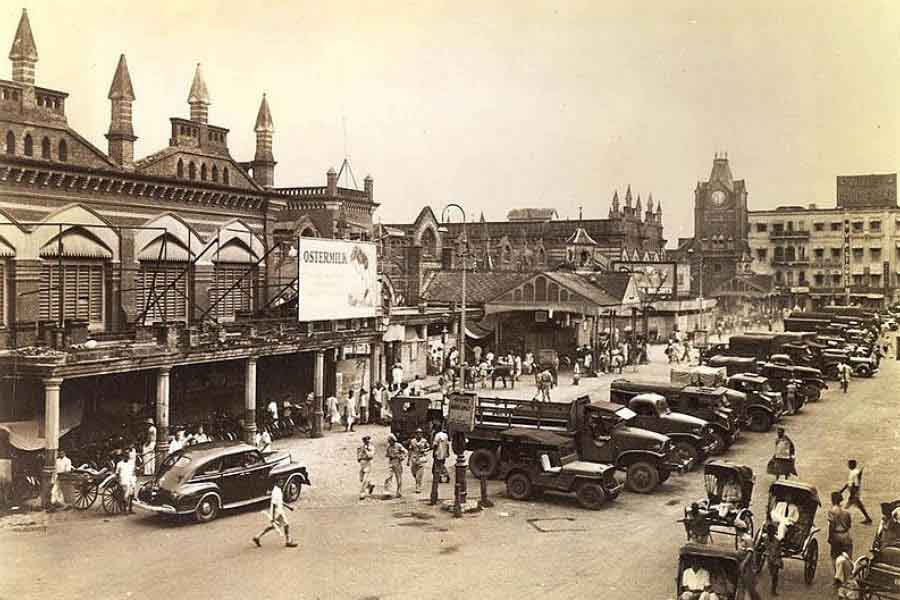
Another shot of the market from 1945, two years before Independence
The case went to court and the local magistrate issued a summon in the name of Stuart Saunders Hogg, chairman of Calcutta Municipal Corporation, to present himself on the anointed date and collect his luggage after presenting due evidence. Unfortunately, returning to work following a long break meant Hogg was bogged down with his twin duties and failed to be present on the given date. The magistrate, a stickler for discipline, now shot off a letter to Stuart Saunders Hogg, commissioner of Calcutta police, to arrest Stuart Saunders Hogg, chairman of Calcutta Municipal Corporation and present him in court to face charges related to dishonour of the court.
One doesn’t know what Stuart Hogg’s reaction was to this strange predicament: of being asked to arrest himself. Inaction would invite further ire of the court and Hogg ordered an arrest warrant in his own name and travelled to Allahabad to present himself in court. The missing luggage was duly handed over but the magistrate got his pound of flesh: he ordered that Hogg would bear the entire cost of the to-and-fro journey and nothing will be subsidised by the government.
Thus ended the curious entanglement of Sir Stuart Saunders Hogg in the court of justice and our story also ends here today.
Acknowledgement: The Anglo-Indian Recreational Club of British Columbia
